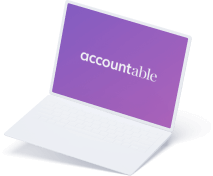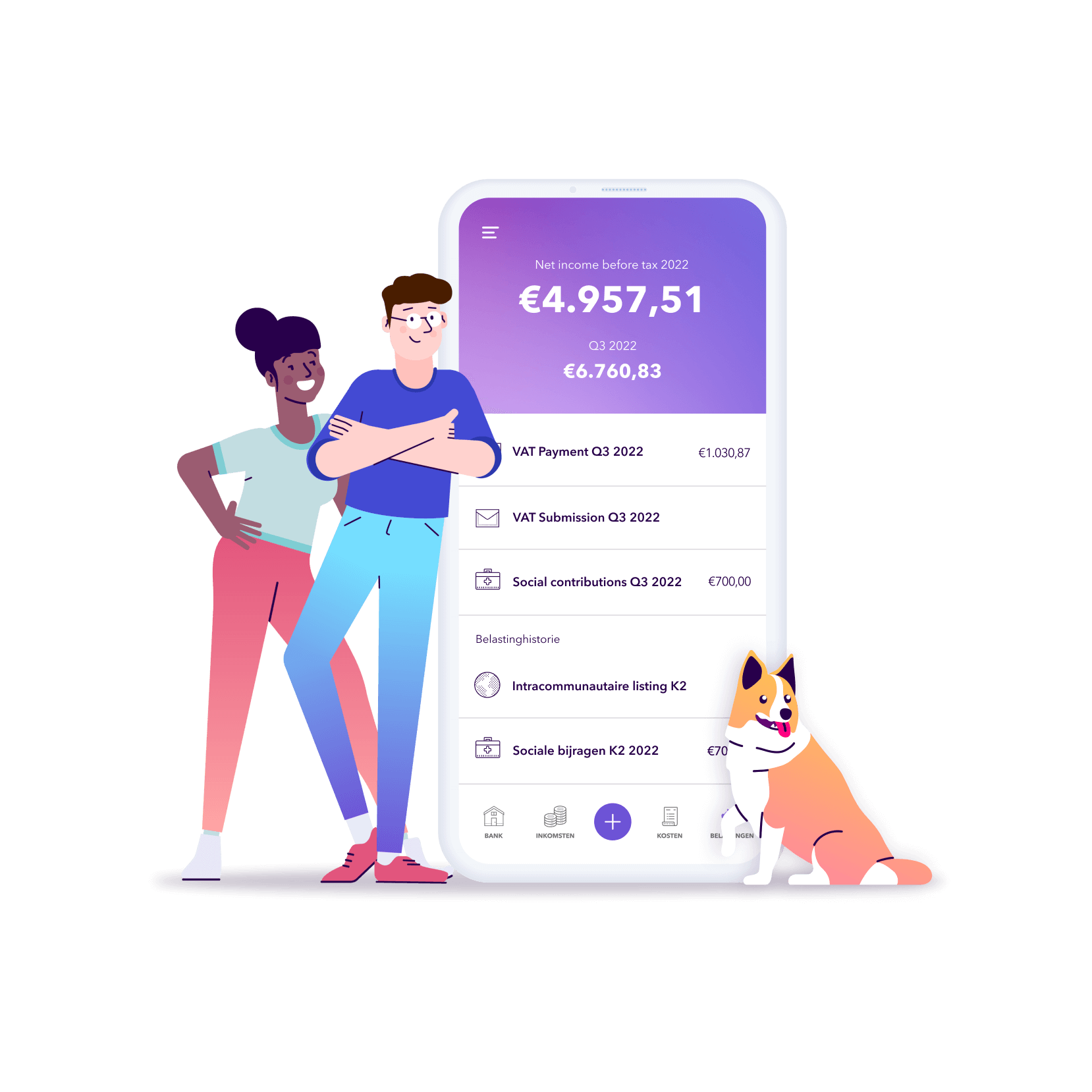
Mixed VAT liability: what is it?
Read in 4 minutes
Unless you’re exempt from charging VAT, when you’re self-employed in Belgium, you generally charge 6% or 21% VAT on the invoices you send to your Belgian-based clients. But what if you’re only VAT exempt for part of your activities? You’re then considered a ‘mixed VAT payer’. What does that mean for your accounting, tax returns, VAT declarations and invoicing? Read on to find out more.
- What is a mixed VAT payer?
- Activities exempt from VAT
- Examples of mixed VAT payers
- Consequences for mixed VAT payers
- Mixed activity billing
- VAT declaration for mixed VAT payers
What does it mean to be a mixed VAT payer?
You’re considered a mixed VAT taxpayer when you carry out both activities that are subject to VAT and activities that are exempt from VAT. VAT-exempt activities are defined in Articles 39 to 42 and Article 44 of the VAT Code (available in French and Dutch). You’ll find more specific examples below.
💡Accountable tip: Being a mixed VAT payer is not the same as being a partial VAT payer. A partial VAT payer also carries out activities where VAT simply does not apply. For example, an individual working as an employee and who is self-employed in a secondary occupation selling products is a partial VAT payer, because VAT isn’t applicable for their employee salary.
VAT-exempt activities
Certain activities carried out by a self-employed sole trader or someone who is self-employed with a company are always exempt from VAT. These are identified in the Belgian VAT Code. Here are the main activities that are exempt from VAT:
🏥 Medical activities performed by doctors, dentists, nurses, etc.
🚑 Activities within the framework of recognised and regulated paramedical professions
🏫 Socio-cultural activities such as caring for the elderly or teaching activities
🏠 The sale, leasing and rental of property
📈 Insurance activities
💳 Financial activities, e.g. issuing loans
🎨 Artistic or literary works intended for publication
Mixed VAT payers: some examples
It’s not always easy to understand which combination of activities results in the status of mixed VAT payer. Here are some examples to help you better assess your situation:
❤️ A self-employed activity in healthcare combined with the sale of products. For example, a dentist who also sells oral hygiene products. Dentistry services are exempt from VAT, but the sale of products is subject to VAT.
🧑🏫 Educational services combined with the sale of materials. For example, a school that offers VAT-exempt training, but also sells textbooks or school supplies.
🎭 Cultural institutions offering hospitality services. For example, a museum or theatre that is exempt from VAT for its cultural activities, but which also operates a brasserie or restaurant.
🧑🎨 An artist who carries out several activities. For example, a painter who is exempt from VAT on a publishing contract, but subject to VAT for the abstract works he sells.
Mixed VAT liability: what are the implications?
Mixed VAT liability has an impact on your right to VAT deduction.
As a VAT payer, you need to repay the VAT you apply on your invoices to the state. On the other hand, you can deduct the VAT you pay on your professional purchases. This is not the case for those who are exempt from VAT.
The situation is a little more complex for mixed VAT payers, since they can only recover part of the VAT paid on expenses.
How to calculate your right to VAT deduction
As a mixed VAT taxpayer, you can calculate your VAT deduction in two ways: on a pro rata basis or based on your actual use.
The pro rata method is based on your turnover. In the case where 75% of your turnover comes from VAT-exempt activities, you can only deduct 25% of the VAT paid.
The actual use method takes into account the final purpose of the costs incurred. VAT is fully deductible on purchases incurred for your VAT-subject activities, while VAT on purchases related to your VAT-exempt activities is not deductible. The problem with this method is that some purchases are not limited to a single activity. For these, you can therefore determine a pro rata yourself, provided it’s credible.
Which method should I choose to calculate the VAT deduction?
Until 2023, you had to choose the pro rata method, as the actual use method required authorisation. Now, you can opt for the actual use method if you prefer, and have to indicate this in an electronic declaration (via form 604A or 604B online).
This declaration must be submitted:
– at the latest before the end of your first monthly or quarterly declaration of the current calendar year if you’re already a mixed VAT payer; or
– before the end of your first declaration period after the start or modification of your activity if you’re a new mixed VAT payer.
The actual use method therefore starts on 1 January or the first day of the month/quarter in which you started your activities.
If you file your declaration late, this method can only be applied from 1 January of the following year.
Note: If you switch to the actual use method, you must use it for at least three calendar years.
Mixed activity billing
When you’re subject to mixed VAT, invoicing can be tricky. Applying VAT to some invoices, but not to others… You might even have to partially apply VAT to some invoices.
If the invoices are for services or goods that are exempt from VAT, the invoices must state this clearly. For example, you can add the words “Exempt from VAT under Article 44 of the VAT Code”. Accountable can help you prepare your invoices correctly.
VAT declaration for mixed VAT payers
Are you a mixed VAT taxpayer and you carry out some activities that are subject to VAT and others that are VAT exempt? You need to clearly distinguish between the two on your VAT return to have an accurate calculation of your right to VAT deduction.
Finally, don’t hesitate to seek advice from an accountant. They’ll help you complete your VAT return!
Did you find what you were looking for?
Happy to hear!
Stay in the know! Leave your email to get notified about updates and our latest tips for freelancers like you.
We’re sorry to hear that.
Can you specify why this article wasn’t helpful for you?
Thank you for your response. 💜
We value your feedback and will use it to optimise our content.










